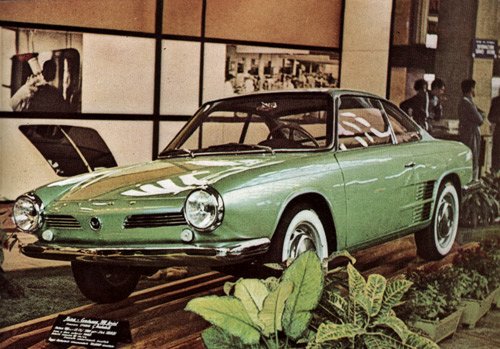Description
The Hino Contessa 900 Sprint was a special high-performance prototype version of the Hino Contessa 900, developed in the early 1960s as a showcase of the company’s engineering ambition and sporting potential. Based on the standard Contessa PC10 sedan and coupé platform, the 900 Sprint was designed as a lightweight, aerodynamic sports coupé intended for competition use and to promote Hino’s technical capabilities both at home and abroad. Though it never entered full production, the Sprint became one of the most memorable and striking cars ever built by Hino Motors.
The Contessa 900 Sprint was designed by the renowned Italian stylist Giovanni Michelotti, whose influence brought a dramatic flair to Hino’s modest engineering base. The sleek, low-slung coupé body was entirely different from the rounded, upright form of the production Contessa 900. Michelotti’s design featured sharp lines, a long, flowing roofline, a tapered tail, and a short front overhang—creating a true sports car silhouette. The rear-engine layout allowed for a low nose and excellent proportions, and the body was carefully shaped to minimize aerodynamic drag. It was one of the most advanced and stylish small sports car designs to come out of Japan in the early 1960s.
Inside, the 900 Sprint carried a minimalist but sporty cabin. Seating was for two, with low-mounted bucket seats, a small-diameter steering wheel, and a simple but functional dashboard featuring key gauges and toggle switches. Weight-saving was a priority, so luxuries were kept to a minimum. The design emphasized the car’s purpose as a fast, lightweight machine rather than a grand tourer.
Power came from an uprated version of the Hino 893 cc inline four-cylinder, water-cooled engine used in the standard Contessa 900. In Sprint specification, the engine was tuned to deliver roughly 50 horsepower—significantly more than the 37 hp of the production car—thanks to higher compression, a freer-flowing carburetor setup, and revised exhaust tuning. Coupled with the car’s light, aerodynamic body, this gave it spirited performance for its size, with a top speed estimated at around 160 km/h (99 mph). The engine was mounted at the rear, driving the rear wheels through a four-speed manual transmission.
The chassis of the 900 Sprint featured a low center of gravity and independent suspension, providing agile and predictable handling. While small and modestly powered by European standards, the car’s light weight, balance, and responsive steering made it a genuine driver’s machine—showing that Hino could compete with European small sports cars such as the Alpine A110 or Fiat-Abarth 750 in concept and execution.
The Hino Contessa 900 Sprint was first shown publicly in 1962, and it immediately attracted attention for its beauty and sophistication. However, the car remained a prototype and never entered production. Hino’s limited resources and its focus on commercial vehicles and the forthcoming Contessa 1300 made it impossible to justify mass production of a niche sports model. Only a handful of examples were built, and the Sprint remained primarily a show car and engineering exercise.
Today, the Contessa 900 Sprint is remembered as one of the most fascinating “what if” stories in Japanese automotive history. It represented Hino’s early flirtation with motorsport and high-performance car design, as well as its collaboration with one of Italy’s greatest designers. Surviving examples are exceedingly rare, but they stand as a testament to the creativity and ambition of Japan’s small but innovative car manufacturers during the 1960s. The Hino Contessa 900 Sprint remains a symbol of what might have been—a beautiful, advanced, and genuinely international sports coupé born from a time of optimism and experimentation in Japan’s emerging car industry.

